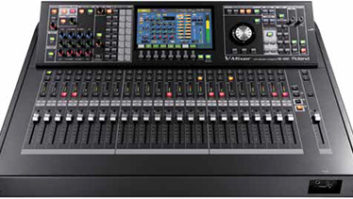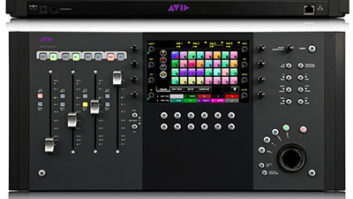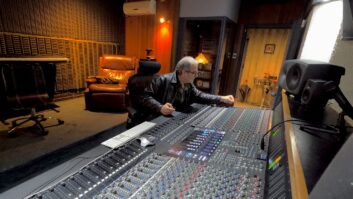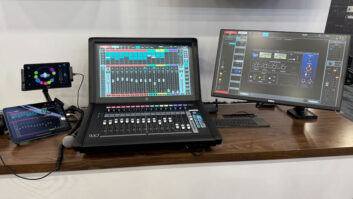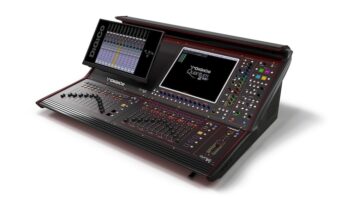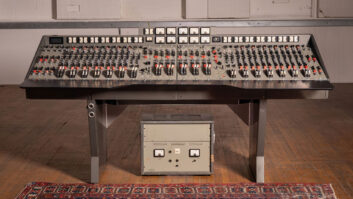Today’s modern House-of-Worship (HOW) is a rapidly changing place and that can mean many different things, as no two churches, even within a particular denomination in the same city, will approach the worship experience exactly the same way. Nor should they—your congregation worships with you specifically because of your unique delivery of the worship experience. Some of those differences may include musical style, instrumentation, vocals, worship leader, and the technical support staff asked to support this mission; all of these factors must be considered when selecting an audio console. Let’s take a look at some of these points in more depth, examining some fundamental questions you should ask your team when it’s time to consider a console upgrade or new system specification.
The first consideration in selection is, “How long should this console meet our needs?” It’s an often overlooked factor, but the length of service is an important question, because you want to consider what meets your current and future needs. Buying something that will do “everything” you ever need in the future is rarely the best approach. Look at the console you have today and ask, “Why am I replacing this console?” Is it because it doesn’t have enough inputs and outputs, or is it because newer, better technology with additional feature-sets are available that may better suit the evolution of your church’s worship and its growing media ministry? The truth is, most consoles being replaced are fully functional. The reason for the upgrade is usually because newer technology with better performance and more flexibility in various use-configurations at a lower cost has become available.
Roland’s M-480 48-channel live digital mixing console is the flagship of its V-Mixing System, offering 48 mixing channels plus six stereo returns for a total of 60 channels. It is also configurable to 90 inputs and 90 outputs depending on digital snake configuration. Once you’ve decided on a likely term of service, it’s easier to sit down with the various parties that will have a voice in the process and ask the question, “Where do we see ourselves in XX-years?” In my consulting on technology solutions, I always try to bring together everyone who has a stake in the outcome—the worship leader, the senior pastor, youth ministry leaders, children’s ministry leaders, and anyone who is charged with leading the technical staff, whether paid, volunteer, or a mixture—to sit down together and hear each other’s hopes, dreams and future goals. It’s important to listen intently to each other to make certain you’ve considered every conceivable need, and how best to meet those needs. Beyond these considerations, there’s always the 800-pound elephant in the room: budget. By defining the desired requirements for a certain distance into the future, and then factoring your budget, you’ll make a much wiser choice that meets the needs of your entire church, instead of decisions based on an ambiguous set of requirements for as far as the eye can see. The last thing you want to hear once the equipment has been installed is, “Why can’t you do that??” Especially if the person saying it is in a position of authority.
The next major consideration is whether to go analog or digital? It depends, but even in the most elementary environment, I’m inclined to go digital, for a couple of reasons. The first is, there are just very few analog solutions left in the market. The ever-increasing power of digital processing at lower and lower costs almost completely outweighs consideration of analog solutions.
At all price points, the all-in-one solutions that are today’s digital consoles bring powerful integration to an entire audio system. On-board graphic equalization for system tuning eliminates the need for outboard EQs. With them inserted in main speaker busses, or on matrix outputs to manage various zones like main cluster, center cluster, balcony fills and under balcony fills, the system engineer now has a powerful set of onboard tools to deploy in optimizing and unifying the listener experience, no matter where people are seated. Onboard dynamic control (compressors, limiters, gates and even emulations of “vintage” analog equipment) gives the mix engineer the ability to manage dynamics, as well as prevent leakage and extraneous noise in the environment. Onboard effects provide ambience and spatial-enhancement of reverbs, delays and other effects processing that was reserved for the best studios only a few years ago.
Digital consoles also usually have the luxury of more mix busses and outputs compared with their similarly sized analog counterparts. Mix busses can be utilized for a number of things, because they are used to create discrete mixes other than the main program used for feeding the sanctuary PA. Often with 16 or more mix busses, the user is able to create numerous monitor mixes, whether speakers or IEMs (in-ear-monitors). Other uses include separate mixes for recording or broadcast feeds, sends to hearing-impaired transmitters, audio to lobby/foyer/backstage areas, even a “subwoofer send” to the drummer for providing kick drum on stage.
A final consideration, not to be overlooked in any forward-thinking technology deployment, is networking. Many of today’s digital consoles make allowances for remote control of the mixing surface, and control of parameters. Most common is the integration of Apple’s iPad, which is becoming the standard for using mixing or controling parameters over a dedicated wireless network. The cost is nominal; simply plug a wireless router into the Ethernet connection on the desk, setup a secure wireless network, and download the console manufacturer’s remote application. It’s much easier to make critical sonic decision with the ability to sit in the particular location while making an adjustment.
Networking can also provide additional audio pathways for personal monitor mix solutions from a variety of manufacturers, allowing performers to control their own monitoring in real-time on stage, whether via amplified speakers or IEMs.
Digital consoles serve all the same functions that their analog brethren do, with the ability to take a number of audio signals from various sources, allowing the operator to shape the tone, modify the dynamics and mix them to various outputs for various uses. The significant advantage the digital console has in the HOW application is recall. Your house of worship is host to a myriad of different events, each requiring a different and sometimes very unique set of audio needs.
The DL1608—Mackie’s digital live sound mixer with iPad control—features 16 Onyx mic preamps, Cirrus Logic converters, a half-dozen aux sends for monitor mixes, master L/R output for mains, and the Master Fader app for all iPad models, among other offerings. For example, Wednesday night’s contemporary worship service will include a full-band setup, video playback from a DVD or other media source, and the youth pastor giving the message on a head-worn microphone. Thursday, you’ll host a civic organization with a guest speaker at a podium, nothing else. Saturday afternoon will see a wedding that requires music playback, and the pastor on a head-worn mic, and Sunday, both a traditional service at 8 AM with organ and choir, followed by a contemporary service with full band, background singers and a guest worship leader. Don’t forget Christmas and Easter plays and other similar seasonal and holiday celebrations, which may require eight or more wireless head-worn or lavaliere mics, boundary miking and multimedia playback from a variety of sources. Each of these events may have a different, likely volunteer audio technician handling that audio, depending on the experience required.
With an analog console, you have only two choices: dedicated audio inputs for each and every input source that don’t get changed much, or “charting” the position of every knob, button, and fader on the console for recall later. The benefits of an analog console include familiarity for many volunteer operators, and the ability to “see” all the settings on the console surface, with every knob position and routing switch available. The downside is that all of these settings are completely manual, and the challenges of both documenting a setup, and missing the recall of every single knob and button are significant. Beginning my career well before digital consoles, I can’t tell you the number of times I’ve been surprised by an unexpected result at the start of a show due to one tiny little button in the wrong position.
Digital consoles eliminate all of this by storing all of the settings in a file within the console’s memory for instantaneous changeover to another use. Master “templates” of each event’s setup can be stored and recalled, so the starting point for any setup can be accurately restored, and individual users can store scenes with their own preferences. More sophisticated systems even allow for libraries of equalizers, dynamics and other processing. Now, the tone of the pastor’s head-worn mic that you worked so hard on is now stored for recall at the push of a button.
A console with myriad features is still useless if no one can operate it, so it’s fair to ask, “Are digital consoles user-friendly?” In a word, yes. Is there a learning curve when making the transition to a new system? Certainly, but I encourage you to seize this opportunity while making significant improvements in your audio system, to take advantage of every new benefit afforded to you by this new technology. Don’t forget, with the added complexity of the digital console comes a significant benefit: recall. Now, even if one of your less-experienced volunteers is handling a simple audio event, the recall of a well-tuned snapshot will yield great results with minimal setup, testing and error-prone “noodling” with the settings. And if the audio technician gets too far out in left field? Recalling the preset snapshot gets them right back to the starting line in a fraction of a second.
Professional training by an experienced audio consultant, sound contractor or integrator should be a part of your upgrade path, whether staying with an analog solution, or moving to a digital mixing system. The audio production teams at most houses of worship tend to be volunteers rather than paid staff, and few (if any) are audio professionals at all. Most are church members with the desire to serve, who sometimes have a small amount of non-professional training in music and audio. The investment in training your staff together as a group is immeasurable, providing a solid foundation of fundamental operation and techniques rather than “This is the way I’ve always done it” approach, and should be seen as a ministry opportunity as well.
Ultimately, choosing a solution based on a clear set of objectives, especially the “season” that this technology should serve your needs and the requirements involved, will see you and your congregation ultimately benefit from an improved quality of “experience” for both the congregation and the technical staff asked to deliver it. I personally recommend the great collection of professional reviews and “Gear Guides” at the Pro Sound Network (www.prosoundnetwork.com) as an objective resource for researching available equipment, and the trends on the horizon that should be considered in the process. You’ll have access to the smartest people in the business and great personal insights on “how-to” technology to make your worship experience the best it can be. Happy mixing!
Eric Elwell is a 25-year veteran engineer with studio, broadcast and live-concert mixing experience. His clients include today’s most recognized popular, country and contemporary Christian music icons. He has recently joined Technical Innovation, a major A/V integrator with seven offices in the Southeast US as a project developer for audio installations in the performing arts and HOW markets.
